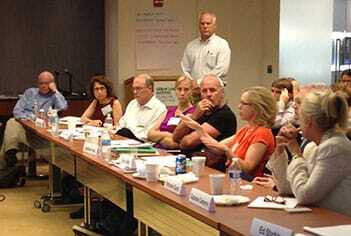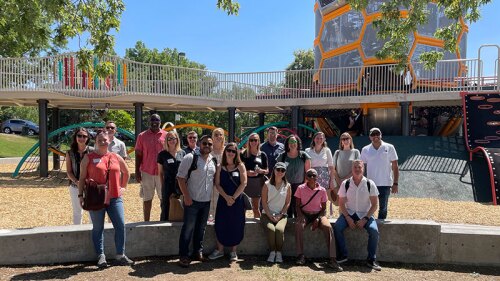As the world becomes increasingly urbanized, the built environment—in terms of what is built, where it is built, and how it is built—is having a critical impact on the physical and emotional well-being of residents and workers, according to Richard Jackson, professor and chair of environmental health sciences at the University of California at Los Angeles Fielding School of Public Health.
A renowned author and lecturer on the connection between land use and human health, Jackson spoke to a group of land use, urban design, and community development experts recently convened in Washington, D.C., by ULI to create a new publication, Ten Principles for Building Healthy Communities. Jackson was one of 24 workshop participants, including past ULI Chairman Peter Rummell, who provided input for the booklet, which will be released at the Institute’s 2013 Fall Meeting in Chicago.
Jackson cited statistics from the U.S. Centers for Disease Control and Prevention (CDC) and other organizations documenting the declining health of American adults and children over the past three decades, including significant weight gain, a decrease in daily physical activity, and an increase in chronic illnesses such as diabetes and heart and respiratory diseases. Among the warning signs:
- For the age group 46–64, 32 percent reported being in excellent health during the time period 1988–1994; this dropped to 13 percent for those of the same age during the time period 2007–2010. (National Health and Nutrition Examination survey)
- In 1988–1994, only 17 percent of those aged 46–64 reported getting no regular physical activity; by 2007–2010, this percentage had risen to 52 percent. (National Health and Nutrition Examination survey)
- The number of children with Type 2 diabetes—a disease more often associated with overweight adults—has tripled since 1980. (CDC data)
- By 2030, it is anticipated that one out of 11 people in the United States will be at least 100 pounds overweight. (Duke University research)
“This has its origins in how we’ve built our homes, our workplaces, our towns,” Jackson said. He challenged the workshop participants to focus on how to shape the built environment to make physical activity a routine part of people’s lives. “Unless we build places that entice people to be active, they won’t be.”
Jackson predicted that health impact assessments—increasingly used to measure the potential health effects of a policy, program, or project—are “here to stay,” causing a shift from past practices. “Many big development decisions have been made without [first] examining the potential health impact—negative or positive—on the human life cycle,” he said.
The Ten Principles publication is being funded by the ULI Foundation through a gift from Foundation Governor James Todd, president of JWT Inc., in McLean, Virginia, and his wife, Sharon. It is part of a multifaceted program of work being conducted by ULI through its Building Healthy Places Initiative, a new area of focus that will highlight the role of land use in creating communities that thrive by encouraging health and wellness. Other activities and programs related to the Building Healthy Places Initiative include topic-specific programming at the Fall Meeting; a conference planned for winter 2014; research exploring the market returns on healthy places, planned for spring 2014; and a housing publication, also planned for spring 2014, that will be focused on the health impact of development geared to multigenerational communities.
The trend toward health-conscious design “presents an enormous opportunity for the development community to invent something new,” said Rummell, noting that developments built with health and wellness as the focal point have great potential to be economically successful. “Health can do for the community development business what golf and tennis did in the 1950s and 1960s,” he said. “Health is the new golf course.”
The Building Healthy Places Initiative leverages the power of ULI’s global networks to shape projects and places in ways that improve the health of people and communities. Learn more.




